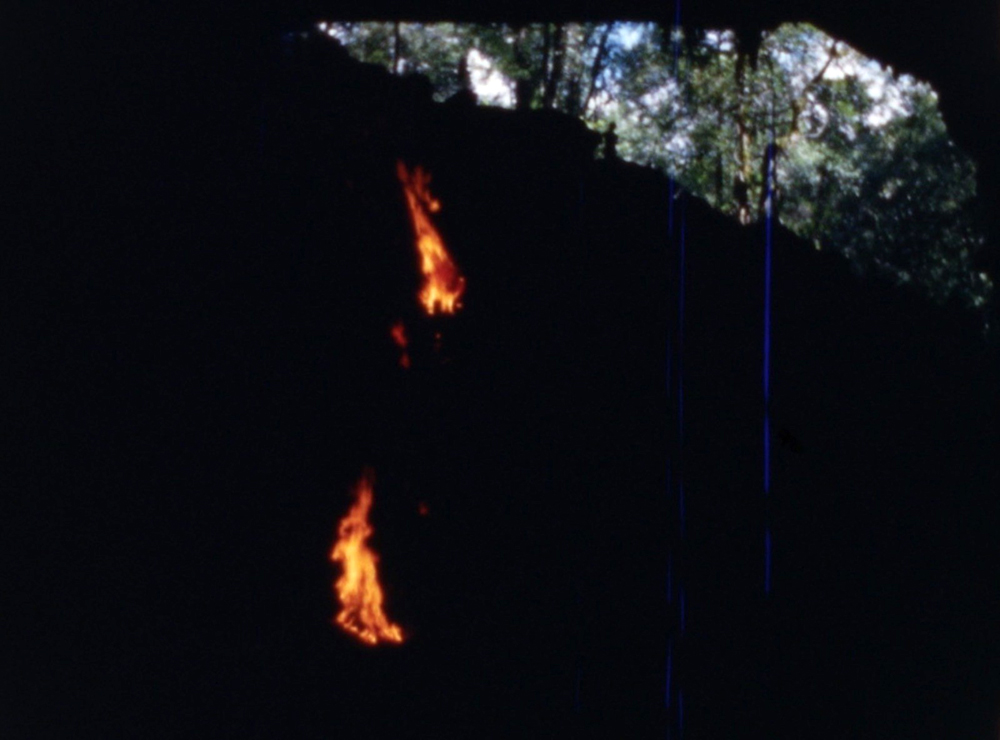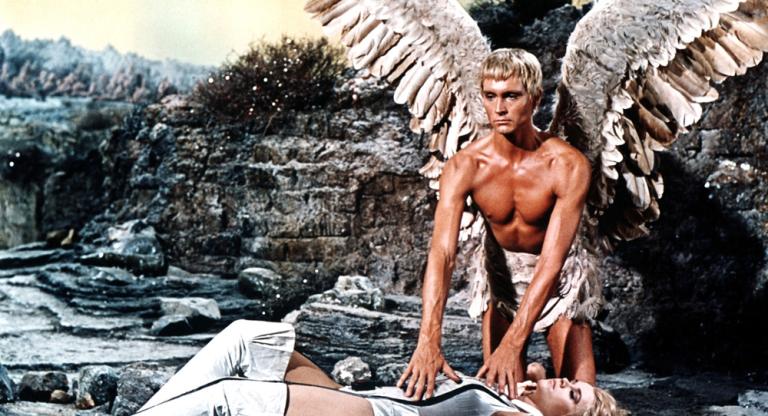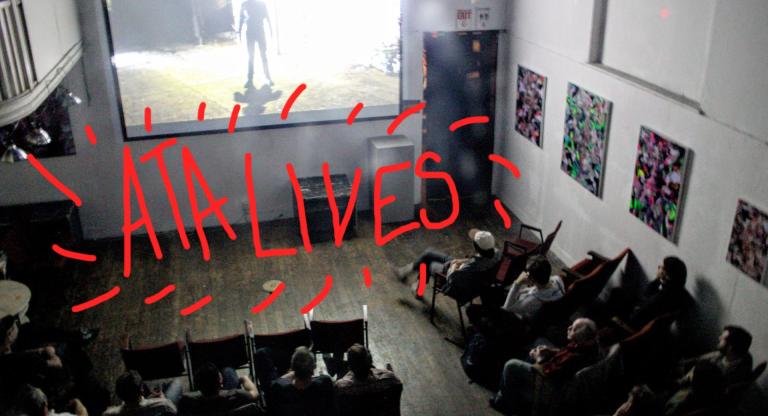Sound is, famously, often ignored in film criticism, and in cinephiles’ romanticization of the cinematic experience it’s similarly overlooked in favor of the fabled “Big Screen.” But as evidenced by the ill-timed and too-short theatrical run of Memoria (2021) last month, cinema’s sonic register lays claim to a considerable number of affective possibilities all its own and quite apart from the visual one. Film theorists have long made wild, contradictory, and sometimes supernatural assertions about the complex experience of film sound, but it’s no great stretch to contend that the cinema’s sonic envelope offers riches that few film-bro, man-cave home theaters can replicate (which is part of the reason no one can understand dialogue these days).
Few recent films have explored the possibilities of a sonic cinema as methodically as Ernst Karel and Veronica Kusumaryati’s Expedition Content (2020), a nearly image-free film, produced under the auspices of Harvard’s Sensory Ethnography Lab. It offers a radical counter-ethnography, using the aural record produced by a 1961 study of what is now West Papua, sponsored by the same university’s Peabody Museum, among other nefarious institutions. Deprioritizing the many visual materials associated with this journey, which include the legendary ethnographic film Dead Birds (1964) by the expedition’s organizer Robert Gardner, Expedition Content joins the ranks of a small corpus of “imageless” films that includes Derek Jarman’s Blue (1993) and Jeff Perkins’s Movies for the Blind, Volume 2 (1999). (These films and several of Gardner’s play in a program parallel to Anthology Film Archives’ run of Karel and Kusumaryati’s film.)
The Harvard-Peabody expedition to what was then Netherlands New Guinea, organized by Gardner with support from the Dutch colonial government, had the team—and their battery of cameras, microphones, and reel-to-reel tape recorders—occupying the Baliem Valley for five months to document the Hubula people (also known as the Dani). Gardner was in illustrious and prolific company, including the writer (and CIA mole) Peter Matthiessen (whose Under the Mountain Wall documents the trip), and Life magazine photographer Eliot Elisofon. It’s Elisofon’s voice we hear at the start of the film, expounding on the need to make images “for scientific purposes,” “to create reality or a sense of reality” in their documentation of the Hubula, an image that is “natural” instead of “false.” (Gardner, when asked if he agrees, begins, “Not exactly…” before the tape cuts him off.)
But the visual and textual record of the expedition, extensive though it is, isn’t Karel’s and Kusumaryati’s concern. Instead, the content of Expedition Content is primarily aural, remixing the thirty-seven hours of audio recordings made by oil heir, governor’s son, and recent Harvard grad Michael Clark Rockefeller along the way. (Rockefeller himself, whose great-grandfather John D.’s Standard Oil had partnered with Royal Dutch Shell to exploit the country’s resources, would disappear somewhere along the southwestern coast of New Guinea on a separate expedition later that year.) Using Rockefeller’s recordings, Karel and Kusumaryati locate and intensify the complex natural and communal soundworld of the Hubula as it’s interpreted—and interrupted—by their visitors from Cambridge. Animal grunts and scratchings, songs, and rainstorms meet machine noise and little artifactual blips and textures of the tape recording, and of course, the interplay of voices—both of the explorers and of their local ethnographic “subjects.” Some of the chatter is banal or expository, as in Rockefeller’s identifications of the sounds he’s recording. Other moments reveal the kind of toxic Boston-Brahminicity one might expect from a group of intrepid white explorers, as in the recording of a drunken birthday party in which they use makeshift instruments in order to approximate jazz, converse in blaccents for comic effect, and explore the possibility of getting “a piece of ass.”
Expedition Content isn’t entirely avisual: it makes sparing use of on-screen text (mostly translations), as well as a minute-and-a-half shot by Gardner. In this footage, shot from inside a cave, silhouetted figures stand before a line of trees at the cave’s mouth, while in the foreground flames dance in a deep field of black along amid blue scratches on the film’s emulsion. Arriving late in Karel and Kusumaryati’s anti-ocularcentric film, these images lose much of their power and their certainty as records of an ethnographic gaze. Expedition Content’s effect, then, is not only to reorient our senses, to make us listen more attentively, but also to sap some of the strength of the image, and so to force us to attend more closely to the dynamics of power that produced these records in the first place.
Expedition Content screens January 7–13 at Anthology Film Archives.



